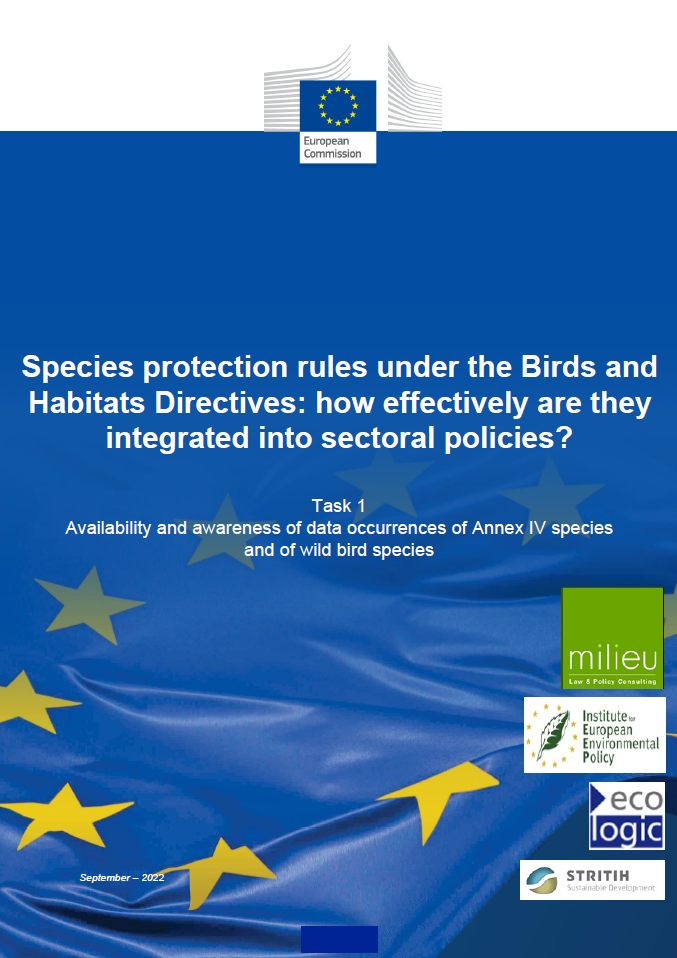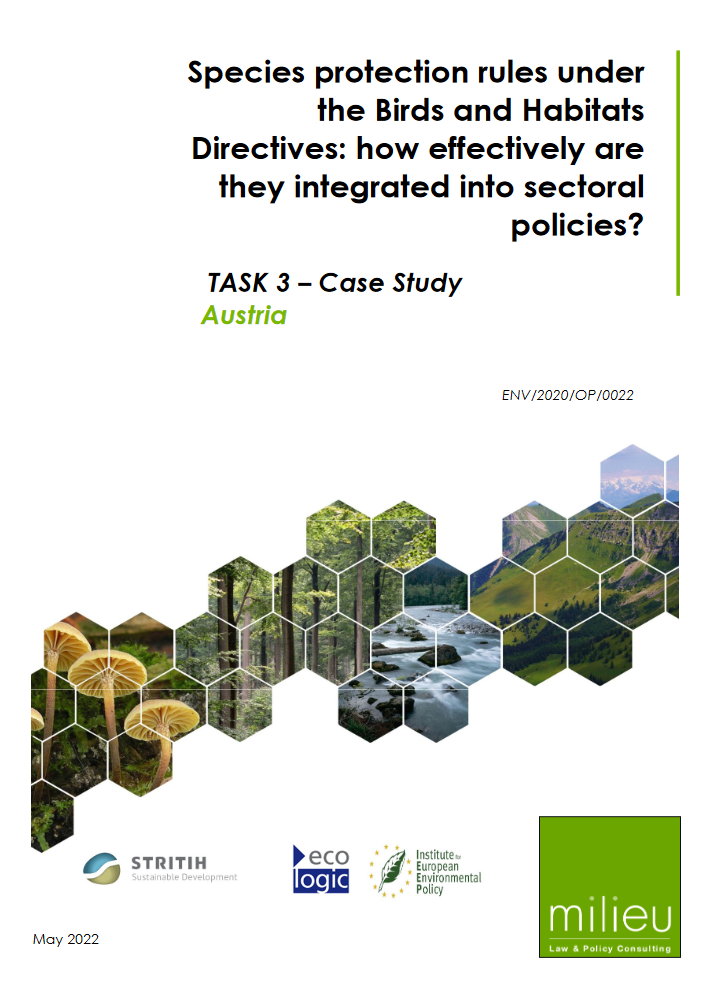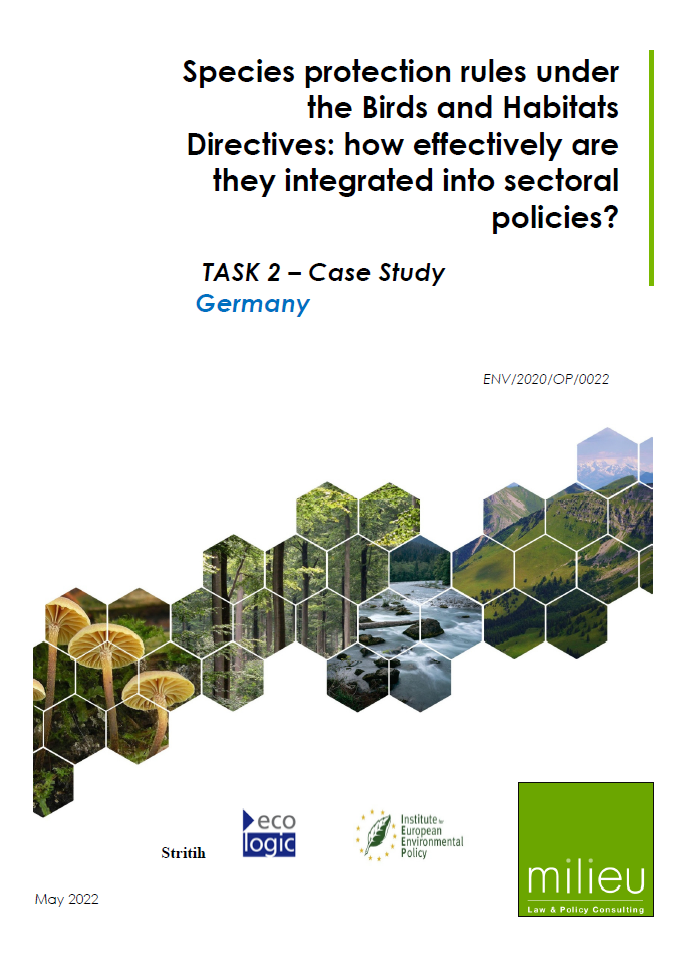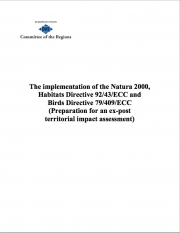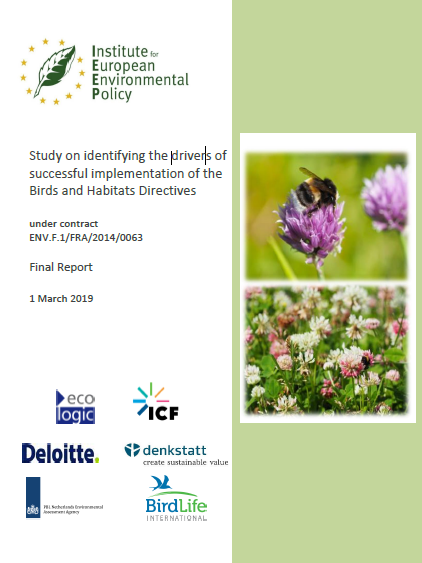Species Protection Rules under the Birds and Habitats Directives – Availability and awareness of data occurrences
- Publication
- Citation
European Commission, Directorate-General for Environment, Species protection rules under the Birds and Habitats Directives – How effectively are they integrated into sectoral policies?. Task 1, Availability and awareness of data occurrences of Annex IV species and of wild bird species, Publications Office of the European Union, 2022, https://data.europa.eu/doi/10.2779/185538
In an exhaustive effort led by the Ecologic Institute, a detailed analysis was conducted to explore the availability and awareness of occurrence data for Annex IV species and wild birds across all 27 EU Member States. The outcome? A set of detailed country profiles alongside key aggregated findings that provide a comprehensive picture of the status quo.
Key takeaways for spatial data availability:
- Data reporting: Most EU countries have made commendable strides in reporting data, especially under the Nature Directives. There's almost a complete set of distribution maps for Annex IV species. However, the same can't be said for wild birds, where about 20% are unaccounted for.
- Gaps and limitations: Despite some countries having high-resolution data, there's a systematic absence of more precise occurrence data. Factors like a lack of funding, dispersed responsibilities among various governing bodies, and the absence of a unified repository for data emerge as significant hurdles.
- Limited data availability from agricultural areas: One of the pronounced gaps in data availability stems from agricultural areas due to factors like limited accessibility of private lands, and a general lack of interest from many farmers in biodiversity surveys or monitoring. Yet, growing citizen science emerges as a beacon of hope to bridge these gaps, supported by new technologies and artificial intelligence. However, its full potential is yet to be realised, demanding more collaboration and better resource allocation.
- Lack of successful collaboration with neighbouring countries: Mobile species, especially birds, move across borders which requires transnational cooperation in data collection and synchronisation, which has not yet been fully achieved.
Key conclusions on awareness of species occurrence data:
- Professional versus implementer awareness: Results show that the awareness of many professionals working on protected species (either for government institutions, environmental NGOs or scientists) is generally considered high, but that many implementing entities and data end-users, such as farmers and foresters (in particular, private forest owners) or other land users lack specific knowledge.
- Sectoral awareness gaps: Most other economic sectors that have a significant impact on nature (e.g. energy, transport, infrastructure, construction, and tourism and water management) display a lack of awareness, insufficient knowledge and understanding of the issue of species and their distribution. Although larger companies seem to be more informed, perhaps due to their wider impact.
- Awareness within protected areas: Awareness seems to be higher within the Natura 2000 network, primarily because of mapping activities and management planning. However, outside these zones, information campaigns are few, largely due to limited resources and information.
- Factors affecting awareness: Species that find a place in national action plans, are a priority for local communities, or are involved in human-nature conflicts tend to be more well-known. However, factors such as missing information or data access restrictions, coarse spatial resolutions unfit for micro-level applications, and insufficient guidance and capacity building by authorities, farmer unions and advisory services and district foresters have led to a fragmented knowledge of species and their habitats.
The current state of data utilization and the general application in most EU states, especially in the agricultural and forestry sectors, remains low. While several methods like websites, online tools, and publications are used to boost awareness, emerging digital solutions offer a promising avenue. This study concludes with actionable recommendations for both national and EU level stakeholders. By bridging the gaps in data availability, enhancing awareness, and promoting best practices, we can ensure that Europe's precious wildlife thrives in harmony with sustainable development.
Exploring pivotal insights from 12 national reports, a summary analysis unveils key challenges and best practices in implementing species protection rules in EU agriculture and forestry, guiding strategic recommendations.
